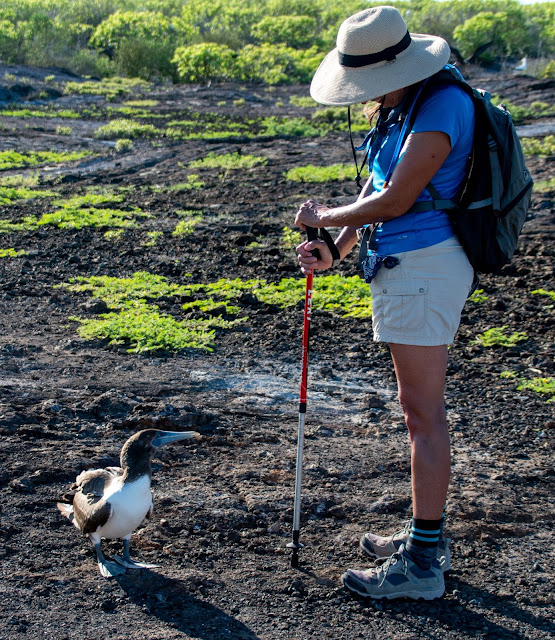Galapagos!
April 07, 2022Remember when the pandemic hit in March 2020? Suddenly we couldn't (or shouldn't) travel. For people like us who travel all the time, this really upended things. We wrote about it at the time. What it really did was focus our attention on the places that we couldn't go. And made us realize that we need to visit the places we want to when we are able to, because you never know when you won't be able to travel anymore.
So we got to thinking about our "bucket list" of travel destinations, and where we might go when the pandemic eases. High on my list were the Galapagos Islands. This remote (600 miles off the coast of Ecuador) archipelago is home to some of the most unusual plant and animal life on the planet. And as fairly young (1 to 3.5 million year old) islands that are isolated from outside influences, they are a living laboratory for the study of how species adapt to their environment and how new species are formed.
When the vaccines became available in late 2020, we decided to plan a trip to the Galapagos. We booked for March 2022, figuring that the pandemic would be pretty much over by then. We did wonder of the Delta surge and then the Omicron surge would up-end our plans. But in the end, it all worked out without any real issues.
We've been back a week now from 19 days in Ecuador and the Galapagos, with 15 days on the islands. There's a lot to cover, and a lot (2,000+) of pictures to sort through and edit. We'll try to cover this trip in several blog posts, probably covering the birds, marine life, animals, geology. We'll see how it goes. The pictures in this post are intended to catch your interest, so you read future posts.
The Galapagos Islands are a province of Ecuador. It consists of 13 main islands, 42 islets, and hundreds of rocks. Ninety-seven percent of the land area is National Park, and only small, select areas are open to visitors. The only way to visit most places is with a National Park Guide, and then your group size is limited to 16 guests. The National Park also limits the number of groups that can visit a specific site on a given day, and even specifies the time of day when those groups can visit. All of this ensures that the nature of the islands is preserved.
With our tour, which was 2 weeks in length, we visited 17 islands/islets and went snorkeling 16 times. The boat that we lived on, the Yolita, took us to all the locations and provided all our meals and lodging. And our guide, Omar Medina, was excellent.
Over the next several posts, we'll try to cover the highlights of this trip. We can't cover it all or show you it all, because we did so much. Some of the highlights include swimming with sharks (including hammerheads!), sea lions, and penguins. Seeing boobies: Blue-Footed, Red-Footed, and Nazca boobies. Iguanas -- both marine and land varieties. Sea turtles and giant tortoises. Baby sea lions nursing, and baby frigate chicks. And so much more. Stay tuned.









0 comments